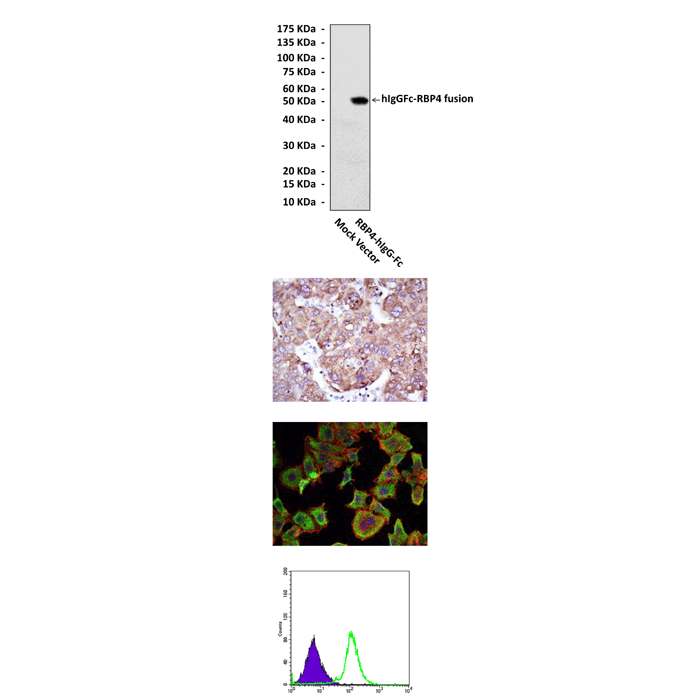Anti-RBP4: Mouse RBP4 Antibody
Mouse RBP4 Antibody: Mouse RBP4 Antibody
Size: 100 ul
Price: $457.00
Description
RBP4 is now identified as an new adipocytokine that has been associated with insulin resistance. Both RBP4 mRNA expression in adipocytes and serum RBP4 levels are elevated in adipose-specific glucose transporter 4-knockout mice, and elevated circulating RBP4 levels cause insulin resistance by inhibiting phosphatidylinositol 3 kinase activity in skeletal muscle and increasing phosphoenolpyruvate carboxylase expression in liver.2 Several clinical cross-sectional studies have shown a significant negative association between circulating RBP4 levels and insulin sensitivity evaluated by the glucose clamp method, but it is unclear if RBP4 is associated with insulin resistance in humans because of many conflicting results. Drugs such as rosiglitazone, exercise and weight loss have been shown to decrease circulating RBP4 levels and improve insulin resistance, but contradictory results have been found in other studies. In addition, a recent clinical study has suggested that RBP4 is more closely related to visceral adiposity than subcutaneous adiposity. Thus, whether or not RBP4 is a new target for treatment of Type 2 diabetes remains to be determined. However, growing evidence suggests that RBP4 may play more important role in lipid metabolism rather than insulin resistance. For example, most of the previous human studies that confirmed the association of RBP4 levels with insulin resistance also observed significant associations with lipid levels, in particular with triglyceride, high-density lipoprotein (HDL)-cholesterol and low-density lipoprotein (LDL)-cholesterol. Others only observed associations of RBP4 with increased triglycerides levels and with pro-atherogenic lipoproteins or key enzymes of lipoprotein metabolism, but not with insulin resistance marker.2 Since hypertriglyceridemia plays an important role in the pathogenesis of cardiovascular disease, circulating RBP4 levels might emerge as a suitable target for therapeutic intervention in cardiovascular disease. In addition, it was shown that hepatic storage of RBP4, unrelated to its expression, could cause liver damage both in chronic hepatitis C (CHC) and nonalcoholic steatohepatitis (NASH) patients.3
2. Wu, Y. et al: J. Lipid Res.50:1479-86, 2009
3. Petta, S. et al: Digest. Liver Dis. 43:404-10, 2011
Details
| Cat.No.: | CP10392 |
| Antigen: | Raised against recombinant human RBP4 fragments expressed in E. coli. |
| Isotype: | Mouse IgG1 |
| Species & predicted species cross- reactivity ( ): | Human |
| Applications & Suggested starting dilutions:* | WB 1:1000 IP n/d IHC 1:50 – 1:200 ICC 1:50 – 1:200 FACS 1:50 – 1:200 |
| Predicted Molecular Weight of protein: | 23 kDa |
| Specificity/Sensitivity: | Detects RBP4 proteins in various cell lysate. |
| Storage: | Store at -20°C, 4°C for frequent use. Avoid repeated freeze-thaw cycles. |
*Optimal working dilutions must be determined by end user.




